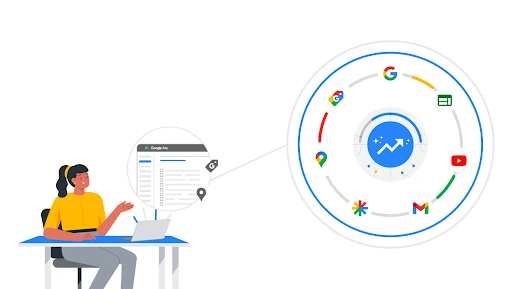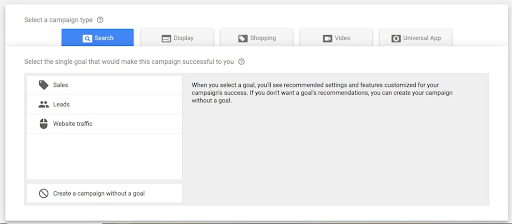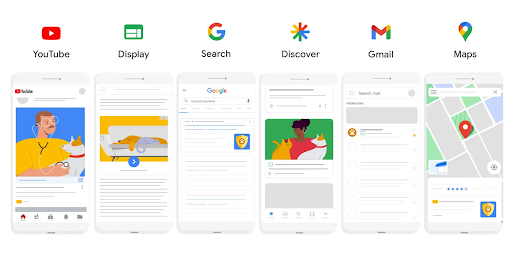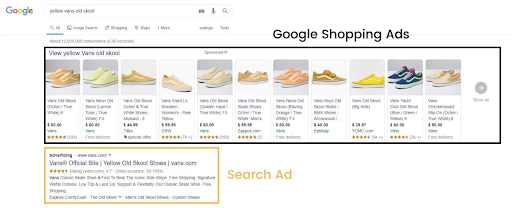Why Should Your Business Use Performance Planner?
In what ways may a performance planner benefit your company? Learning about Performance Planners will enable you to see why and how your business may use them to its advantage. Forecast models for a single campaign or even multiple campaigns can be made with it. One of its best uses is budget optimization for multiple initiatives with the same marketing goal.
Performance Planner builds its models using your data as well as user data from the Search and Display networks. A Performance Planner can use data from billions of search queries every day to simulate relevant ad auctions. Seasonal variations, competition data, and landing page updates are also taken into account.
You can read more about the Performance Planner here before using it. Read on for a brief explanation. The remaining portions of this article address how to set up the Performance Planner and how to analyze the results.
What is a Performance Planer?
Being an adaptable tool, the Performance Planner is always learning how to work better for your campaigns. Some of the responses to the question “why should your business use Performance Planner?” should be familiar to you. It eliminates any uncertainty from planning and budgeting.
Machine learning is another tool that Performance Planner employs to develop its forecasting skills. It will assess its forecasts against actual events and adjust for errors.
The Performance Planner lets you view campaign forecasts and assess how they compare to historical results. Additionally, it will provide recommendations for budget optimization as well as recommendations for adjusting campaign settings.
Benefits Can a Performance Planner Offer Your Company
For a firm, a performance planner is quite helpful.
- This allows you to predict potential results, allowing you to make appropriate plans and budgets. In addition to making predictions for the future, you can look back on and evaluate your previous quarterly or monthly performance.
- You can also obtain outside advice on how to run your advertising campaign more effectively. Using Performance Planner, you may also ascertain how changing your advertising strategies might affect the result of your campaign.
- You can have a better understanding of your brand’s position by examining the effects of alterations in your advertisement’s performance on your campaign.
- Performance planners are a helpful tool for removing guesswork and assumptions from decision-making. When you run pay-per-click (PPC) advertising, you can enhance the performance of your campaign by getting a better picture by continuously testing different keywords.
- This tool may also be used to look into your ranking and outcomes after making any changes to your campaign.
Google Performance Planner (GPP)
Make use of the performance planner tool to schedule your advertising expenditure. You may evaluate the effects of campaign modifications on important metrics and overall efficacy.
This intriguing and quite helpful tool is made to forecast how campaigns will affect clicks and conversions. Predictions are provided based on 24-hour changes to auction data and billions of searches. Additionally, it determines the appropriate marketing budget to boost conversions and conversion rates.
Google has seen time and time again that employing the performance planning capability may raise conversions by as much as 43% for marketers. You can use this tool to project the campaign’s quarterly and monthly outcomes. You might also receive advise on how to increase campaign effectiveness for the same investment.
Google Performance: How Does it Operate?
The application simulates pertinent ad auctions using numerous search queries, and it is typically updated once every 24 hours.
By including variables like seasonality, competition for activities, landing locations, etc., it encourages appropriate ad bids throughout the seven to ten days prior.
Then, it calculates conversions based on the conversion rate categories displayed in the “Conversions” or “Conversion rate” column of your Google Ads performance reports.
Google Ads Performance Planner
The following are the most critical and helpful performance planners for Google Ads, so study them carefully and implement them for your enterprises.
A. Campaign Performance Predictions are Made Possible by Google Ads Performance Planner
One of the most challenging aspects of running a pay-per-click (PPC) advertising campaign is figuring out how changes will impact your campaigns. In order to identify more efficient ways to use your cash, you constantly experiment with different keywords or targeting when running PPC adverts. Nevertheless, there’s a potential that implementing the adjustments will negatively impact how well your business advertises.
But before you make the required adjustments, you may use this tool to predict campaign results. One of the most significant benefits of Google Ads Performance Planner is the ability to get a campaign forecast. With this tool, you can also examine the outcomes as you adjust campaign parameters to enhance the effectiveness of your advertisements.
You can see how your advertisement’s predicted success will impact key performance indicators (KPIs) like clicks, conversions, and conversion value by looking at their projected performance.
Because of this, you are aware of how campaign modifications will impact your budget and return on investment (ROI) before putting them into practice. It offers you a leg up in your campaign so you can make decisions that will increase the impact of your advertisements.
B. Performance Planner for Google Ads Eliminates Uncertainty
In what ways may a performance planner benefit your company? Here’s a strong case for why your business ought to use Performance Planner: You are free to stop depending on conjecture. You keep making changes to your campaigns based on conjecture rather than hard data to predict what will and won’t work.
Rather than making these adjustments and crossing your fingers, you can use Google Ads Performance Planner to remove all uncertainty from your campaign planning. Rather of making assumptions about what fresh keywords will do to your advertisement, Performance Planner allows you to see those effects immediately. This program can analyze the projections and determine if it makes sense to modify your advertising efforts.
As a result, instead of basing your decisions on informed estimates, you may have precise insight into how the changes will impact your campaign.
C. Performance Planner for Google Ads Aid in Budget Optimization
One of the most significant benefits of Google Ads Performance Planner is budget optimization. Naturally, you want to get the most out of your budget and see a great return on investment when you invest in Google AdWords advertising. With the aid of this program, you can optimize your budget and make the most out of every dollar.
With Performance Planner, you can calculate how much it will cost to make changes to your campaigns and assess if they will ultimately be worthwhile. You can use this tool to assess whether you need to increase your budget and how doing so will impact the amount of money your advertising campaigns bring in.
How the Performance Planner is Set Up?
For those of you who haven’t used Performance Planner for your own campaigns yet, let me walk you through the process step-by-step.
1. After logging into your Google Ads account, go to the Planning section, click Performance Planner, and then select the tools and settings button that appears in the top bar.

2. You can enter your pre-existing plans or create new ones in this section. Go to the blue “Create new plan” link or press the blue “+” button located in the left-hand corner.

3. You might have to decide whatever campaign type you want to concentrate on, depending on which campaigns are accessible for your account.

4. Click the next button after selecting the campaigns you wish to include in your plan. For improved budget management, Google advises selecting campaigns that have similar objectives.
5. Decide on the conversion value, clicks, and other key performance indicators (KPIs) as well as the date range. Another way is to concentrate on a certain goal.

6. Choose “Create Plan.”
7. After you click this, you will be redirected to the draft plan page where you may view an outline of your strategy.
Eligibility Criteria for Using Performance Planner
The various eligibility conditions that allow you to utilize Performance Planner are as follows:
i. Local Campaigns

These ads anticipate that you will increase store visits and optimize your calls and directions. The aforementioned 30-day store visitation statistics will be available. To be eligible for budgeting, your average spending must be at least USD 500.
Furthermore, the run time for the specified 30 days must be operational. It does not, however, cover the use of joint budgets.
ii. Search Campaigns

A minimum of three clicks or conversions must be received by your campaign within the last seven days of operation. You must factor in the quantity of clicks (CPC, or cost-per-click) in your bidding tactics.
If not, it should be determined by the quantity of conversions, the worth of a conversion, or target impression bidding tactics. You also need to have allocated an IS budget of no more than 5% for the ten days that preceded it.
iii. Display Campaigns

The campaign must have been active for the previous seven days or longer. Furthermore, you shouldn’t have changed or updated your bid strategy in the seven days prior.
It is not particularly restricted in terms of budget. Last but not least, a minimum of 20 clicks or conversions, and a minimum of USD 10 in the seven days prior.
iv. Performance Max Campaigns

The bid strategy cannot have changed in the seven days prior. It is necessary that you engage in active campaigning.
The break gap, however, must be shorter than seven days if it is not active. With this performance planner, you can use a common budget, and you should budget every day.
v. Purchase Campaigns

You must spend at least $10 USD in the ten days prior to participating in these programs. It would also be ideal to actively campaign for each of those days.
Additionally, you ought to have received at least 100 impressions in the seven days that have just passed.
You should have spent no more than 5% of your search budget in the last ten days. Last but not least, you must maintain a conversion rate of at least 10 conversions in terms of both numbers and values during the previous 10 days.
vi. App-Based Campaigns

This approach assumes that you haven’t changed your bid strategy in the last ten days. A minimum of ten days of functionality are required for the same.
At least ten conversions must have occurred over the allotted ten days, and the budgetary restrictions are not strictly enforced.
vii. Videos Campaigns

You must not have changed your bidding strategy in the three days prior to becoming eligible for video campaigning. However, in order to increase the amount of conversions, you must employ a cost-per-action, or CPA, bidding approach.
When it comes to conversions, a minimum of five are needed, and the amount spent in the seven years prior must be at least USD 7. Nonetheless, vigorous campaigning is required. In terms of finances, it limits the use of shared ones and demands daily upkeep.
Final Thought - Performance Planner
To sum up, including Performance Planner into your Google Ads campaigns will greatly improve your marketing endeavors. It gives you insightful information, facilitates more effective budget allocation, and guarantees that your advertising tactics complement your company’s goals.
Performance Planner is a tool that may really help you achieve your advertising goals, whether you’re a major corporation trying to remain ahead in a competitive landscape or a small business trying to make the most of your advertising money.
It’s an investment that could yield greater returns on investment, better outcomes, and a more robust online presence for your company.
Your company’s performance and the amount of conversions could both improve using Performance Planner. With the aid of expenditure scenario maximization, it also helps to maximize the company’s sales.
Using maximization for a spending scenario also helps maximize the company’s sales.
You can make strategies for advertising and marketing with the help of Performance Planner. It illustrates how your activities can impact the critical metrics and overall performance. By adjusting the budget allocation for your campaigns, Performance Planner helps you determine which opportunity is the most incredible fit. You can view your business performance and forecast more precisely as a result.
Validation and Simulation performance planners are two-way planners that can aid in promoting and advertising campaigns.
A firm can benefit greatly from having a performance planner. This lets you anticipate potential results and make appropriate plans and financial arrangements. You can study and evaluate your previous quarterly or monthly performance and make future predictions. Performance Planner is also useful for figuring out how changes you make to your advertising campaigns might affect the outcome of your campaign.
You can make strategies for advertising and marketing with the help of a Performance Planner device. It illustrates how your activities might impact important metrics and overall performance. This makes it easier for you to see your business’s performance and projections.
Effective performance management is necessary for businesses. By using both formal and informal methods, they may align their systems, personnel, and resources with their strategic objectives.
